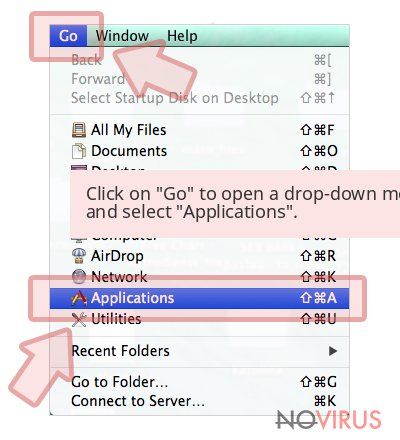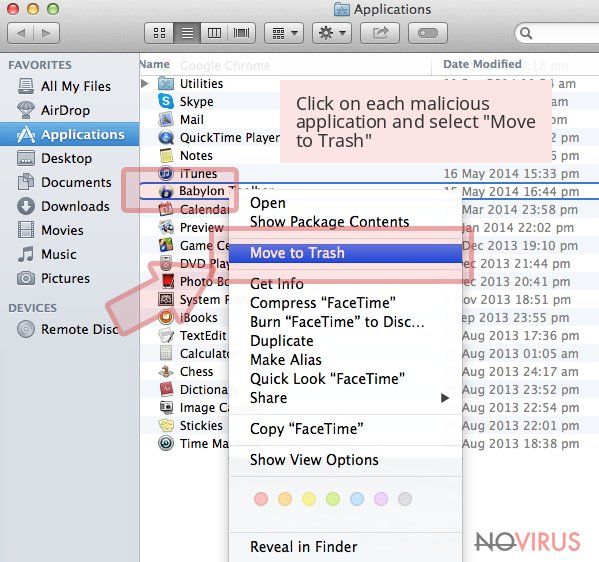Uninstall “Promoted Content by mgid” ads (Clear Removal Instructions) - Aug 2018 updated
“Promoted Content by mgid” ads Removal Guide
Description of "Promoted Content by mgid" pop ups
Mgid alerts continue bothering the virtual community

Mgid functions as a PUP. Its key mission is to entice users into visiting certain websites or purchase specific services. It does so by displaying supposedly enthralling articles and commercial offers.
Unfortunately, such excessive advertising might not only become a hindrance but lead to further browsing and cyber security issues.
The key problematic aspect of this adware is its operation mode, it functions with the help of scripts. Thus, it bothers its detection. Furthermore, this PUP may also direct users to insecure domains.
Due to launching additional websites in the background, not only does your browser perform slower, but it may become subject to cyber attacks. Due to shady promotional content, it would not be surprising if you could be directed to the browser-based tech support scam.
If you already get annoyed by Mgid ads or similar pop-up alerts opening in new tabs while browsing the web, it is high time you performed Mgid removal. You could do it faster with the assistance of FortectIntego.

Adware: a serious threat? NO
Comparing this app to others, it is worth mentioning that it does not operate as any kind of parasite. However, its inflicted effects might be no less annoying. Furthermore, attempts to detect it might also lead to frustration.
If you spot Mgid advertisements in some websites, note, that it does not necessarily mean that your browser is plagued with adware.
This adware may be part of advertising techniques used by certain websites. However, the fact that they overcrowd their sites with these advertisements does not leave a positive impression.
The websites displaying these ads deny any responsibility so even if you get directed to a potentially insecure website, the responsibility will lie solely upon your shoulders. While originally, adware was never considered malware.
The phenomenon among cyber criminals to wrap malware and deliver it as adware or use certain features of it in their campaigns becomes a tendency. For instance, when Facebook users were bombarded with fake messages with the video links containing their profile picture, eventually, they risked downloading adware.
Then, dealing with the hybrid of adware and malware causes a series of issues. Thus, it is highly recommended to remove Mgid or any other PUP from the browser and the system.

Ways to prevent the installation of dubious PUPs
The adware with the label of ‘Promoted Content by Mgid’ might be spotted in different sites both, reliable and insecure ones. Some of them are download.com, cnet.com, softonic.com or soft32.com.
Since it functions via adware elements, you will hardly notice it travelling along with a free application. Therefore, Mgid hijack does not exist. In order to avoid trouble meddling with the PUP, you should let malware elimination tool monitor the safety of your browser and OS. In addition, restrain from clicking on links which suggest disclosing intriguing details about celebrity life details or the game which will keep you awake all night.

Get rid of Mgid ads
Since this adware functions via scripts, deleting it manually might become troublesome. Thus, it is recommended to remove Mgid with the assistance of an anti-spyware tool. You can also delete the adware scripts manually. Below instructions demonstrate how you can do so by resetting the browser.
In case you installed anything promoted by the ads, it is recommended to uninstall it and scan the system again. After you complete Mgid removal, scan the system again.
You may remove virus damage with a help of FortectIntego. SpyHunter 5Combo Cleaner and Malwarebytes are recommended to detect potentially unwanted programs and viruses with all their files and registry entries that are related to them.
Getting rid of “Promoted Content by mgid” ads. Follow these steps
Uninstall “Promoted Content by mgid” in Windows systems
It should be noted that MGID adware may have also 'invited' other questionable applications into the system. If you have spotted applications which are issued by 'unknown' publishers, uninstall them.
Terminate suspicious programs from Windows 10/8 machines by following these instructions:
- Type Control Panel into Windows search and once the result shows up hit Enter.
- Under Programs, choose Uninstall a program.
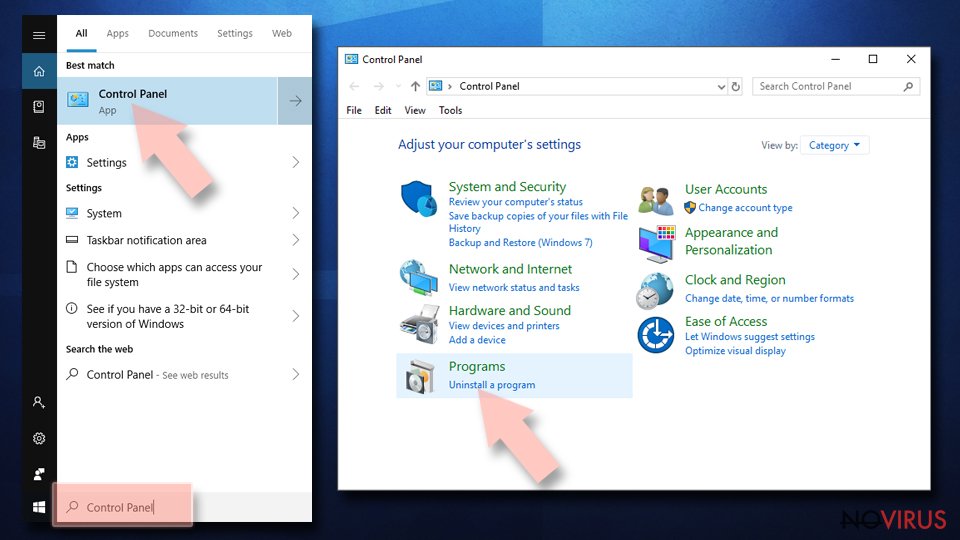
- Find components related to suspicious programs.
- Right-click on the application and select Uninstall.
- Click Yes when User Account Control shows up.

- Wait for the process of uninstallation to be done and click OK.
Windows 7/XP instructions:
- Click on Windows Start and go to Control Panel on the right pane.
- Choose Add/Remove Programs.
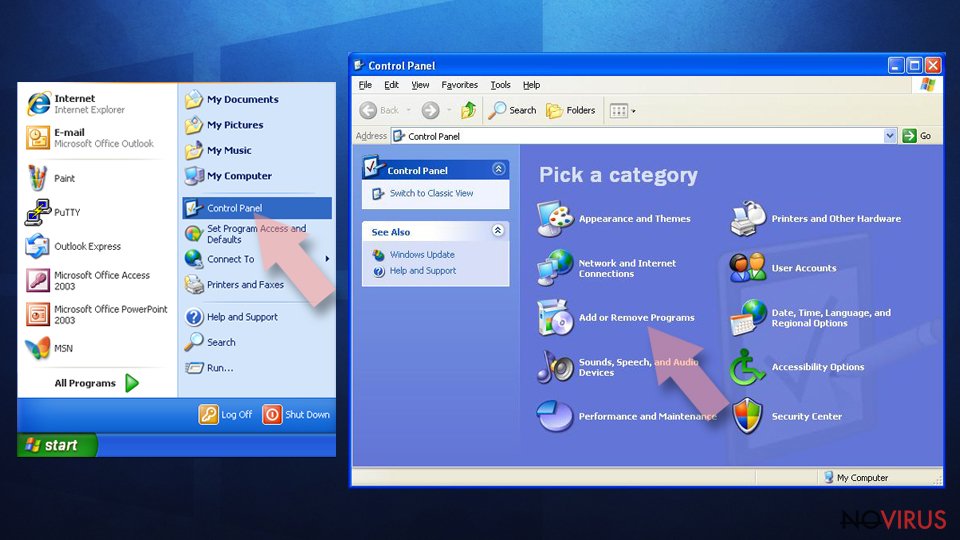
- Select Uninstall a program under Programs in Control Panel.
- Click once on the unwanted application.
- Click Uninstall/Change at the top.
- Confirm with Yes.
- Click OK and finish the removal.
Uninstall “Promoted Content by mgid” in Mac OS X system
-
Users who use OS X should click on Go button, which can be found at the top left corner of the screen and select Applications.

-
Wait until you see Applications folder and look for “Promoted Content by mgid” or any other suspicious programs on it. Now right click on every of such entries and select Move to Trash.

Delete “Promoted Content by mgid” ads from Microsoft Edge browser
Delete suspicious extensions from MS Edge:
- Go to the Menu by clicking on the three horizontal dots at the top-right.
- Then pick Extensions.
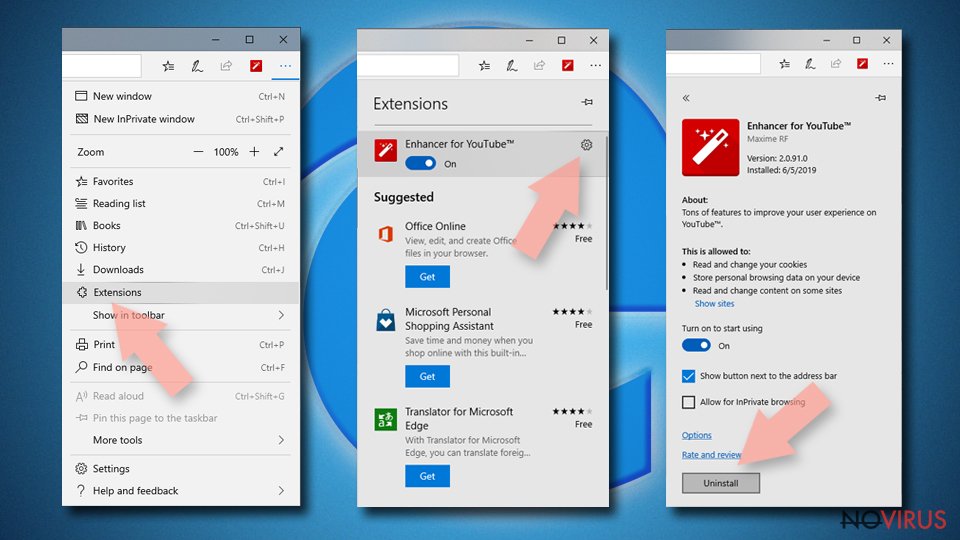
- Choose the unwanted add-ons on the list and click on the Gear icon.
- Click on Uninstall at the bottom.
Clear cookies and other data:
- Click on the Menu and from the context menu select Privacy & security.
- Under Clear browsing data, select Choose what to clear.
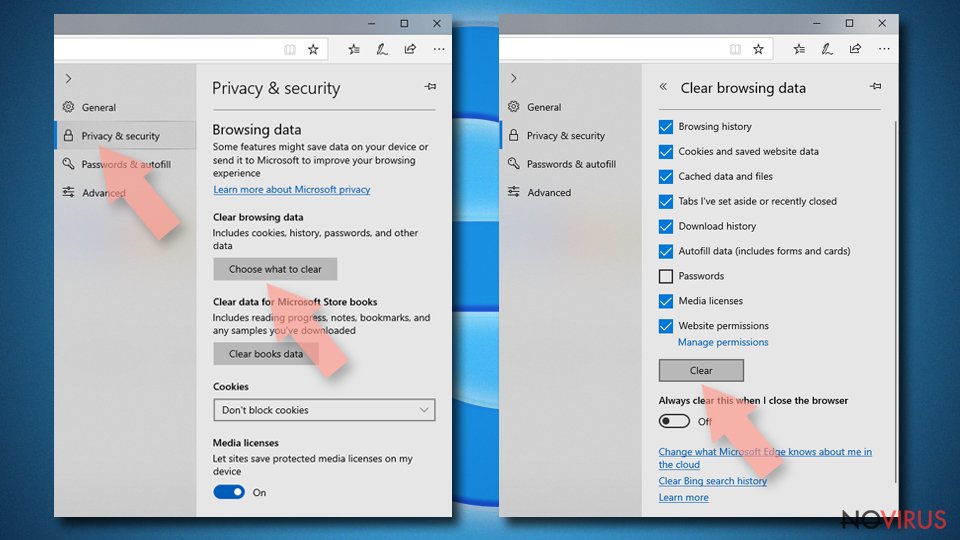
- Choose everything except passwords, and click on Clear.
Alter new tab and homepage settings:
- Click the menu icon and choose Settings.
- Then find On startup section.
- Click Disable if you found any suspicious domain.
Reset MS Edge fully:
- Click on the keyboard Ctrl + Shift + Esc to open Task Manager.
- Choose More details arrow at the bottom.
- Go to Details tab.
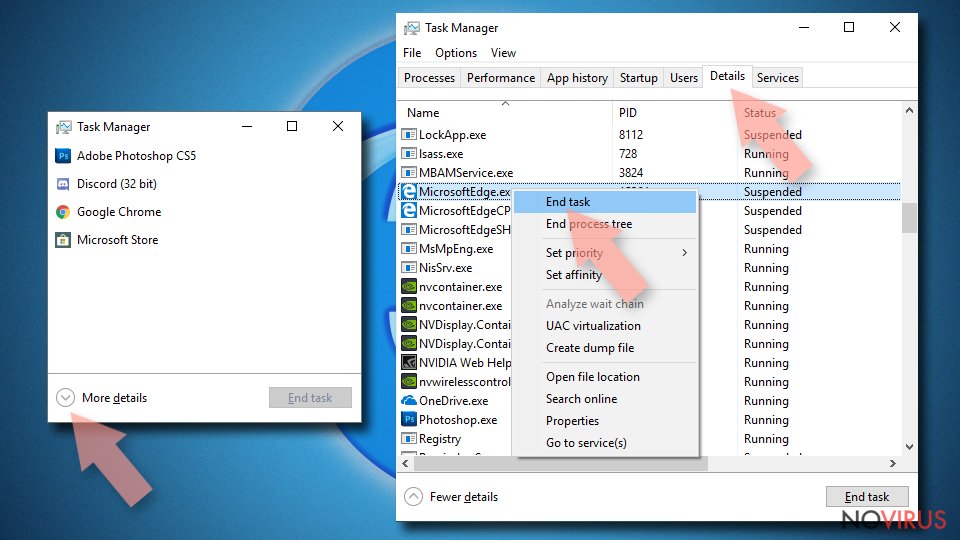
- Now scroll down and locate every entry with Microsoft Edge name in it.
- Right-click on each of them and select End Task to stop MS Edge from running.
When none of the above solves the issue, you might need an advanced Edge reset method, but you need to backup your data before proceeding.
- Find the following folder on the PC: C:\\Users\\%username%\\AppData\\Local\\Packages\\Microsoft.MicrosoftEdge_8wekyb3d8bbwe.
- Press Ctrl + A on your keyboard to select all folders.
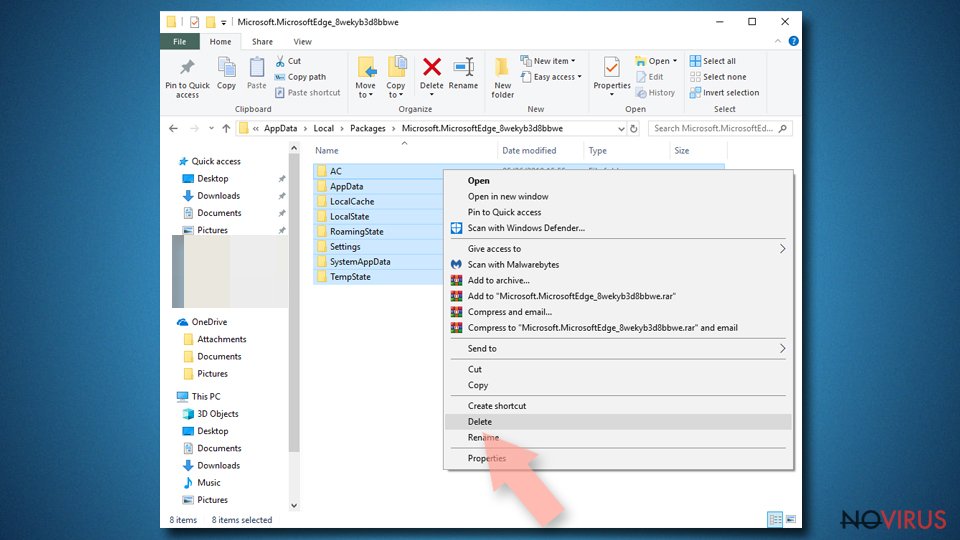
- Right-click on the selection and choose Delete
- Right-click on the Start button and pick Windows PowerShell (Admin).
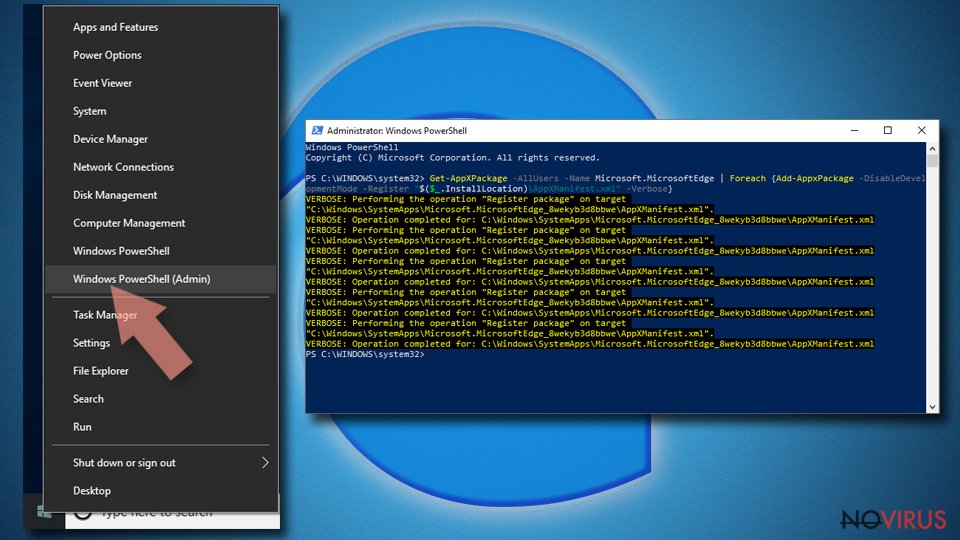
- Copy and paste the following command, and then press Enter:
Get-AppXPackage -AllUsers -Name Microsoft.MicrosoftEdge | Foreach {Add-AppxPackage -DisableDevelopmentMode -Register “$($_.InstallLocation)\\AppXManifest.xml” -Verbose
Instructions for Chromium-based Edge
Delete extensions:
- Open Edge and click Settings.
- Then find Extensions.
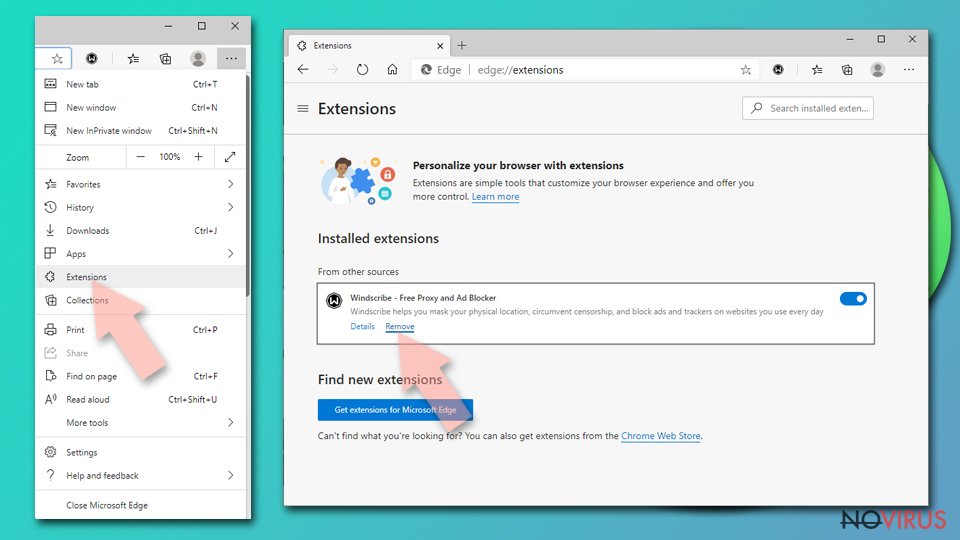
- Delete unwanted extensions with the Remove.
Clear cache and site data:
- Click on Menu and then Settings.
- Find Privacy and services.
- Locate Clear browsing data, then click Choose what to clear.
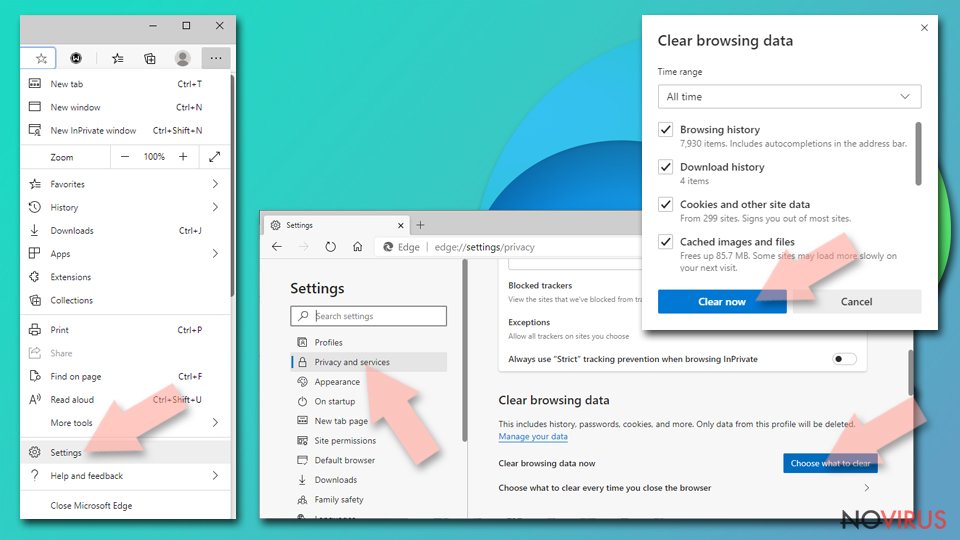
- Time range.
- Click All time.
- Select Clear now.
Reset Chromium-based MS Edge browser fully:
- Go to Settings.
- On the left side, choose Reset settings.

- Select Restore settings to their default values.
- Click Reset.
Delete “Promoted Content by mgid” from Mozilla Firefox (FF)
Remove suspicious Firefox extensions:
- Open Mozilla Firefox browser and click on the three horizontal lines at the top-right to open the menu.
- Select Add-ons in the context menu.
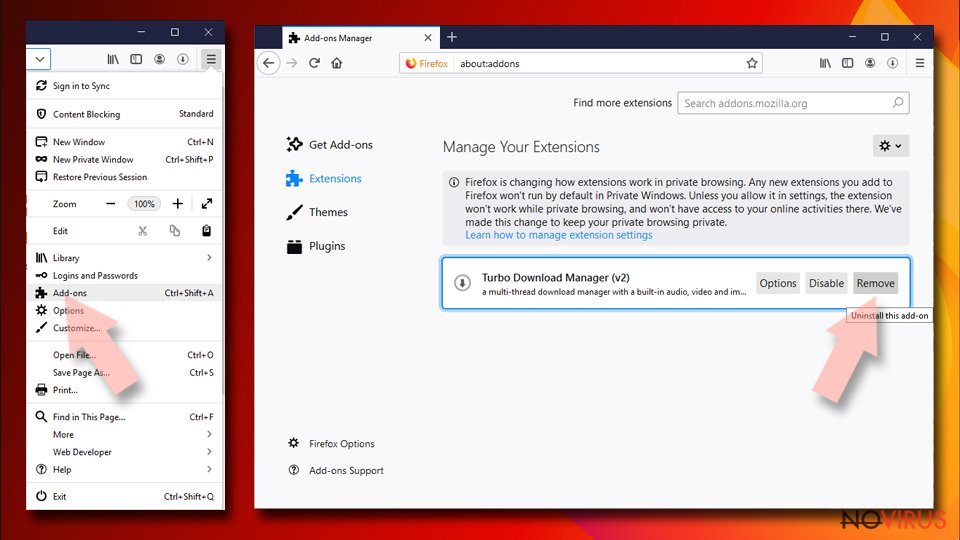
- Choose plugins that are creating issues and select Remove.
Reset the homepage on the browser:
- Click three horizontal lines at the top right corner.
- This time select Options.
- Under Home section, enter your preferred site for the homepage that will open every time you launch Mozilla Firefox.
Clear cookies and site data:
- Click Menu and pick Options.
- Find the Privacy & Security section.
- Scroll down to choose Cookies and Site Data.
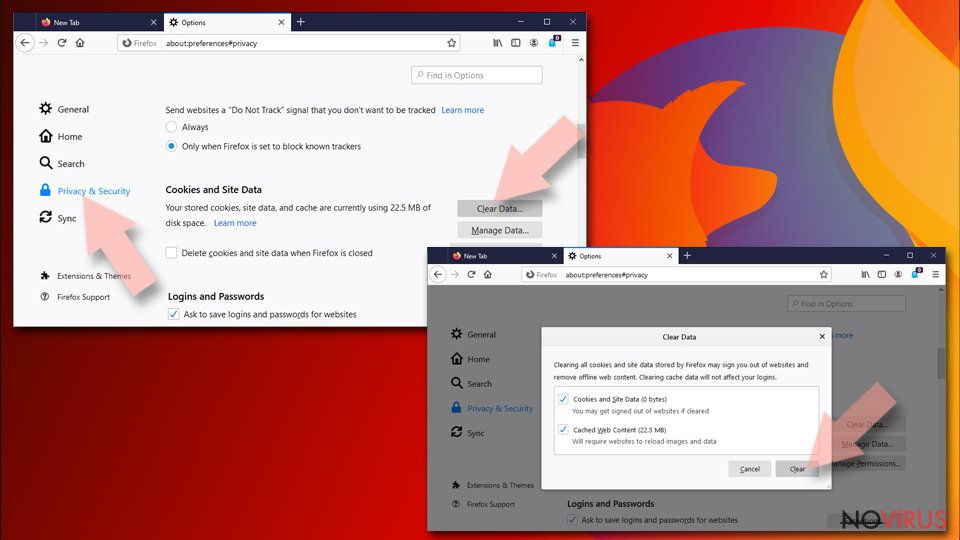
- Click on Clear Data… option.
- Click Cookies and Site Data, Cached Web Content and press Clear.
Reset Mozilla Firefox:
If none of the steps above helped you, reset Mozilla Firefox as follows:
- Open Mozilla Firefox and go to the menu.
- Click Help and then choose Troubleshooting Information.
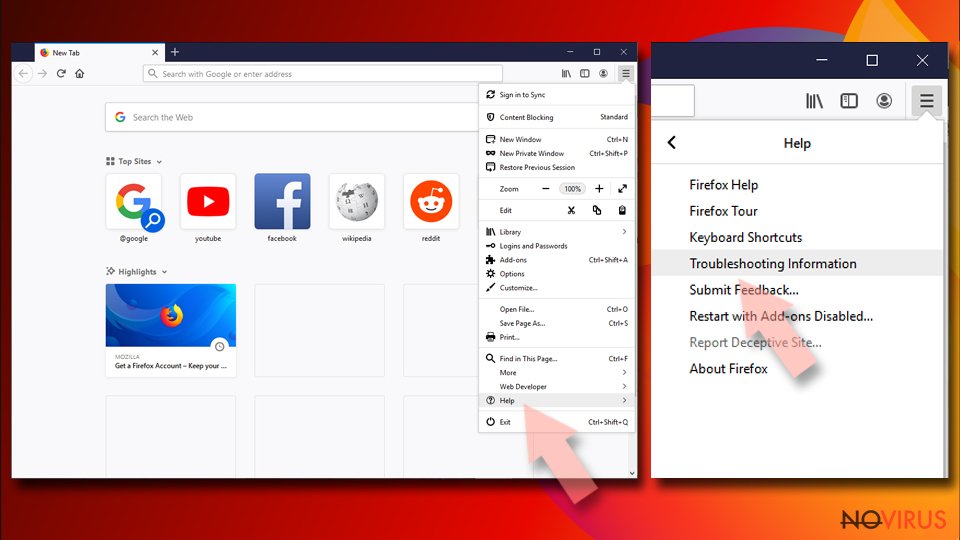
- Locate Give Firefox a tune-up section, click on Refresh Firefox…
- Confirm the action by pressing on Refresh Firefox on the pop-up.
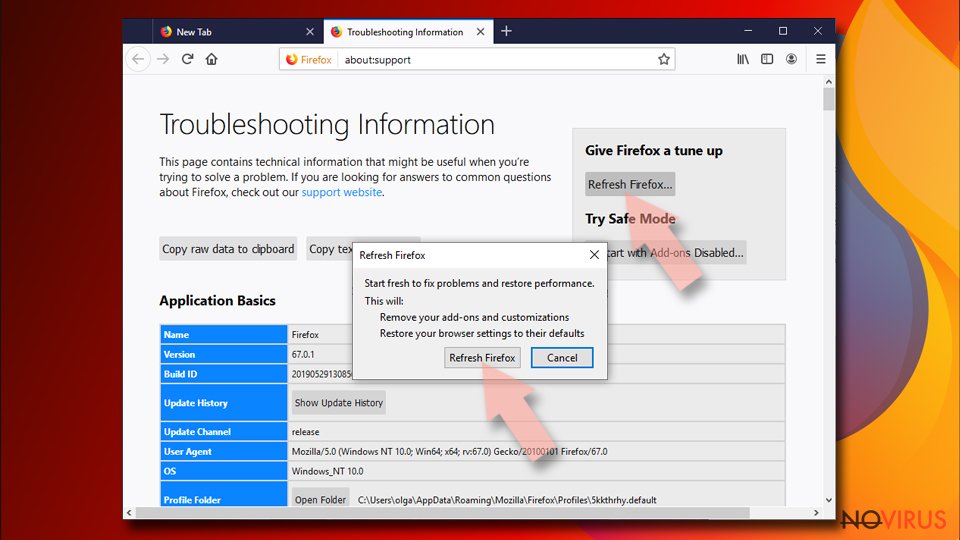
Chrome browser reset
Find and remove suspicious extensions from Google Chrome:
- In Google Chrome, open the Menu by clicking three vertical dots at the top-right corner.
- Select More tools > Extensions.
- Once the window opens, you will see all the installed extensions.
- Find any suspicious add-ons related to any PUP.
- Uninstall them by clicking Remove.
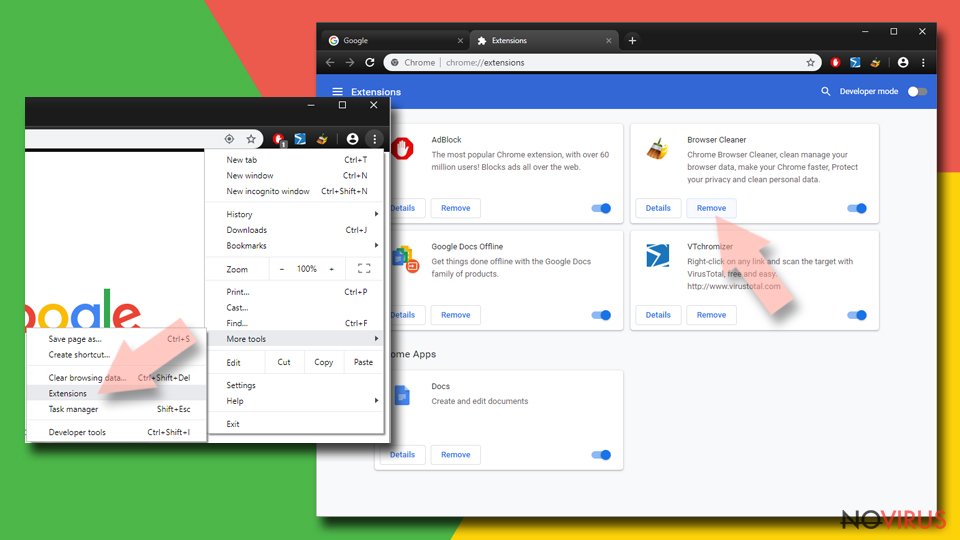
Clear cache and web data from Chrome:
- Click the Menu and select Settings.
- Find Privacy and security section.
- Choose Clear browsing data.
- Select Browsing history.
- Cookies and other site data, also Cached images and files.
- Click Clear data.
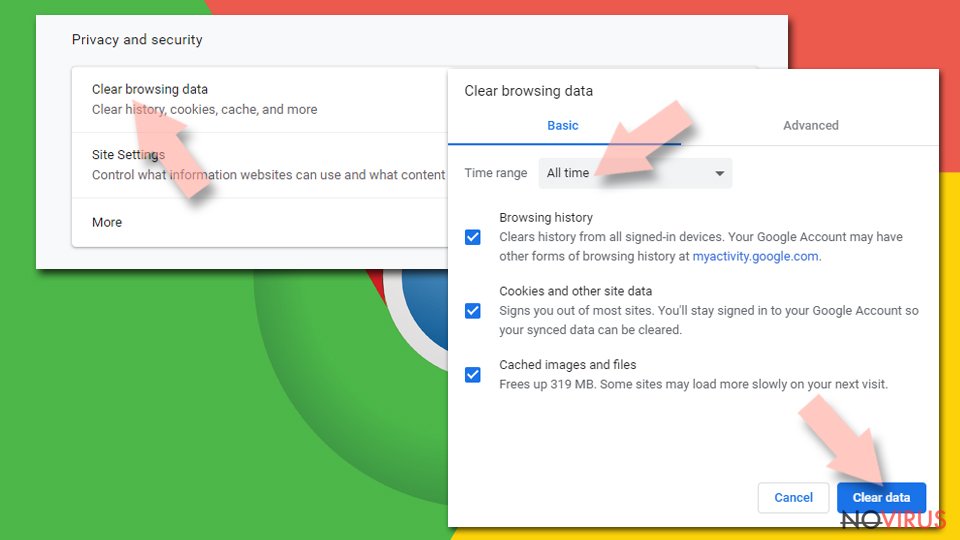
Alter settings of the homepage:
- Go to the menu and choose Settings.
- Find odd entries in the On startup section.
- Click on Open a specific or set of pages.
- Then click on three dots and look for the Remove option.
Reset Google Chrome fully:
You might need to reset Google Chrome and properly eliminate all the unwanted components:
- Go to Chrome Settings.
- Once there, scroll down to expand Advanced section.
- Scroll down to choose Reset and clean up.
- Click Restore settings to their original defaults.
- Click Reset settings again.
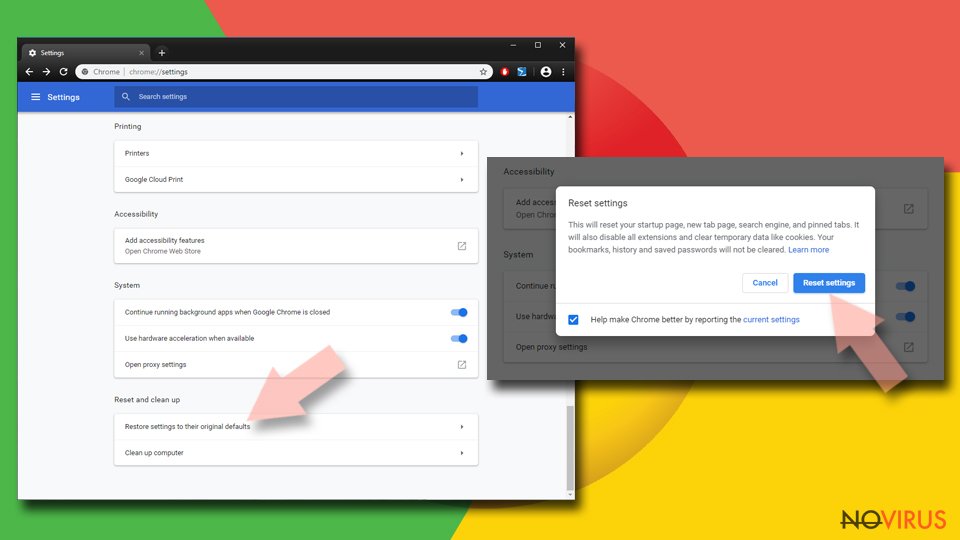
Delete “Promoted Content by mgid” from Safari
Get rid of questionable extensions from Safari:
- Click Safari.
- Then go to Preferences…
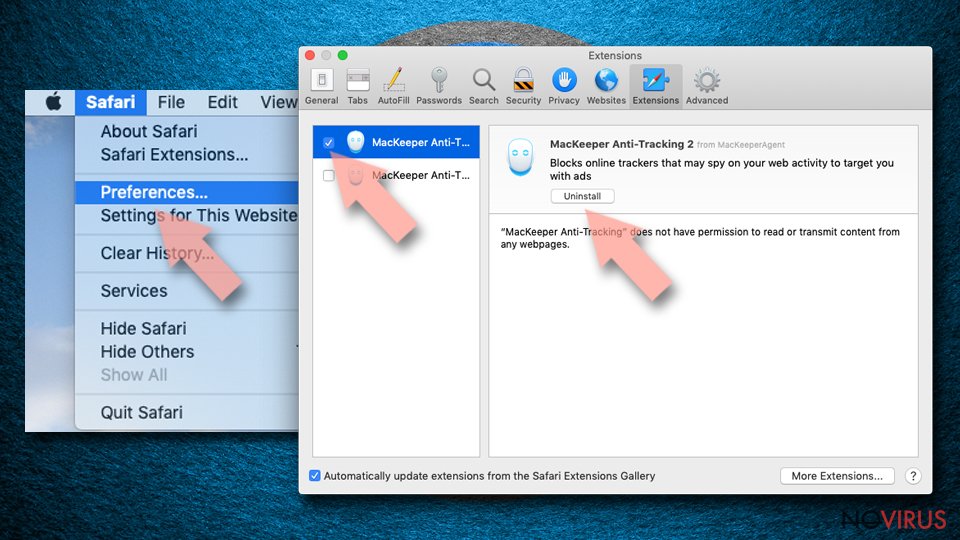
- Choose Extensions on the menu.
- Select the unwanted extension and then pick Uninstall.
Clear cookies from Safari:
- Click Safari.
- Choose Clear History…
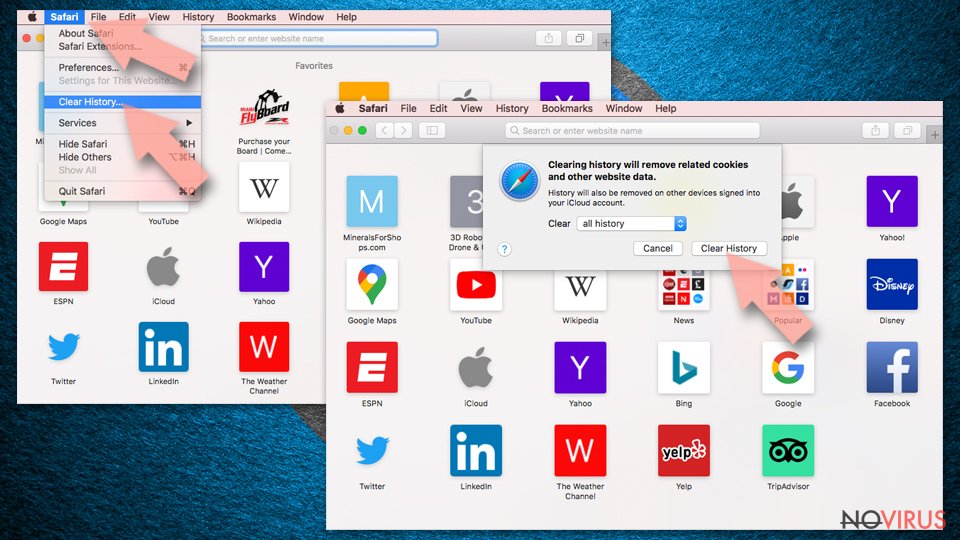
- From the drop-down menu under Clear, find and pick all history.
- Confirm with Clear History.
Reset Safari fully:
- Click Safari and then Preferences…
- Choose the Advanced tab.
- Tick the Show Develop menu in the menu bar.
- From the menu bar, click Develop.
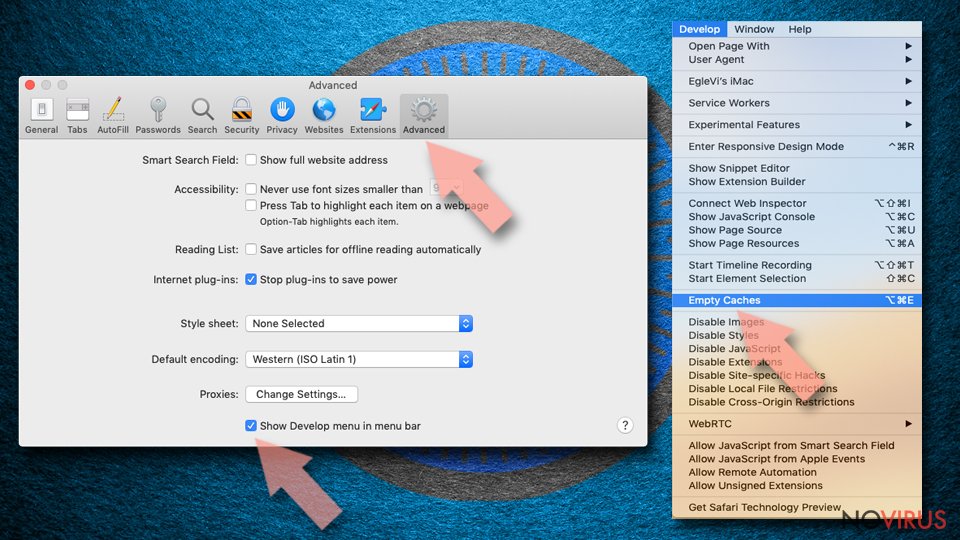
- Then select Empty Caches.
Even if you have completed all the steps above, we still strongly recommend you to scan your computer system with a powerful anti-malware software. It is advisable to do that because an automatic malware removal tool can detect and delete all remains of “Promoted Content by mgid”, for instance, its registry keys. The anti-malware program can help you to easily detect and eliminate possibly dangerous software and malicious viruses in an easy way. You can use any of our top-rated malware removal programs: FortectIntego, SpyHunter 5Combo Cleaner or Malwarebytes.
How to prevent from getting adware
A proper web browser and VPN tool can guarantee better safety
As online spying becomes an increasing problem, people are becoming more interested in how to protect their privacy. One way to increase your online security is to choose the most secure and private web browser. But if you want complete anonymity and security when surfing the web, you need Private Internet Access VPN service. This tool successfully reroutes traffic across different servers, so your IP address and location remain protected. It is also important that this tool is based on a strict no-log policy, so no data is collected and cannot be leaked or made available to first or third parties. If you want to feel safe on the internet, a combination of a secure web browser and a Private Internet Access VPN will help you.
Recover files damaged by a dangerous malware attack
Despite the fact that there are various circumstances that can cause data to be lost on a system, including accidental deletion, the most common reason people lose photos, documents, videos, and other important data is the infection of malware.
Some malicious programs can delete files and prevent the software from running smoothly. However, there is a greater threat from the dangerous viruses that can encrypt documents, system files, and images. Ransomware-type viruses focus on encrypting data and restricting users’ access to files, so you can permanently lose personal data when you download such a virus to your computer.
The ability to unlock encrypted files is very limited, but some programs have a data recovery feature. In some cases, the Data Recovery Pro program can help recover at least some of the data that has been locked by a virus or other cyber infection.
